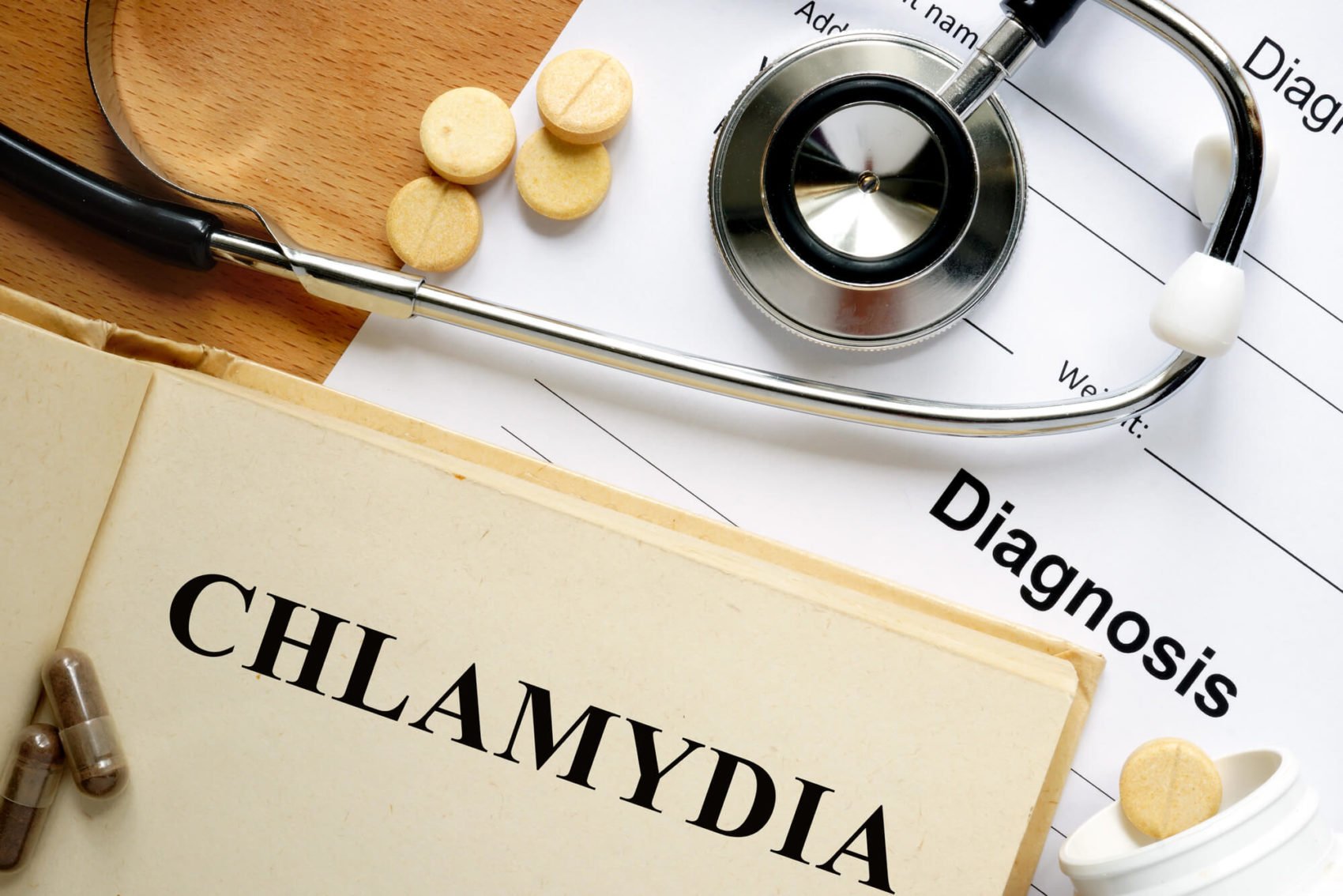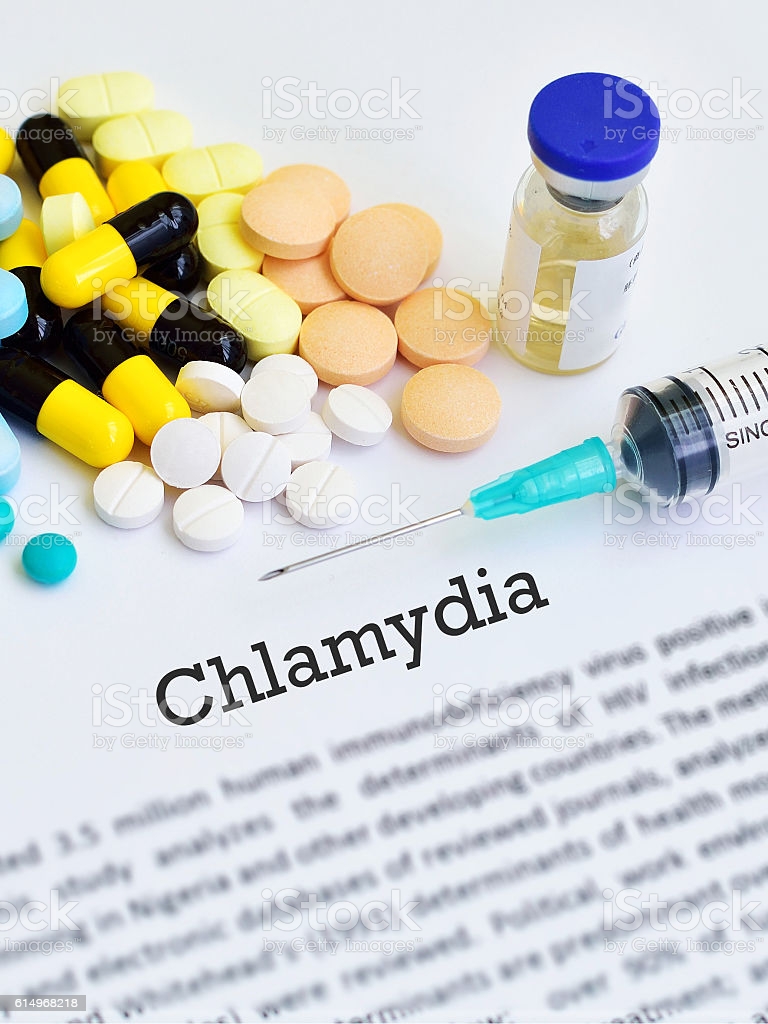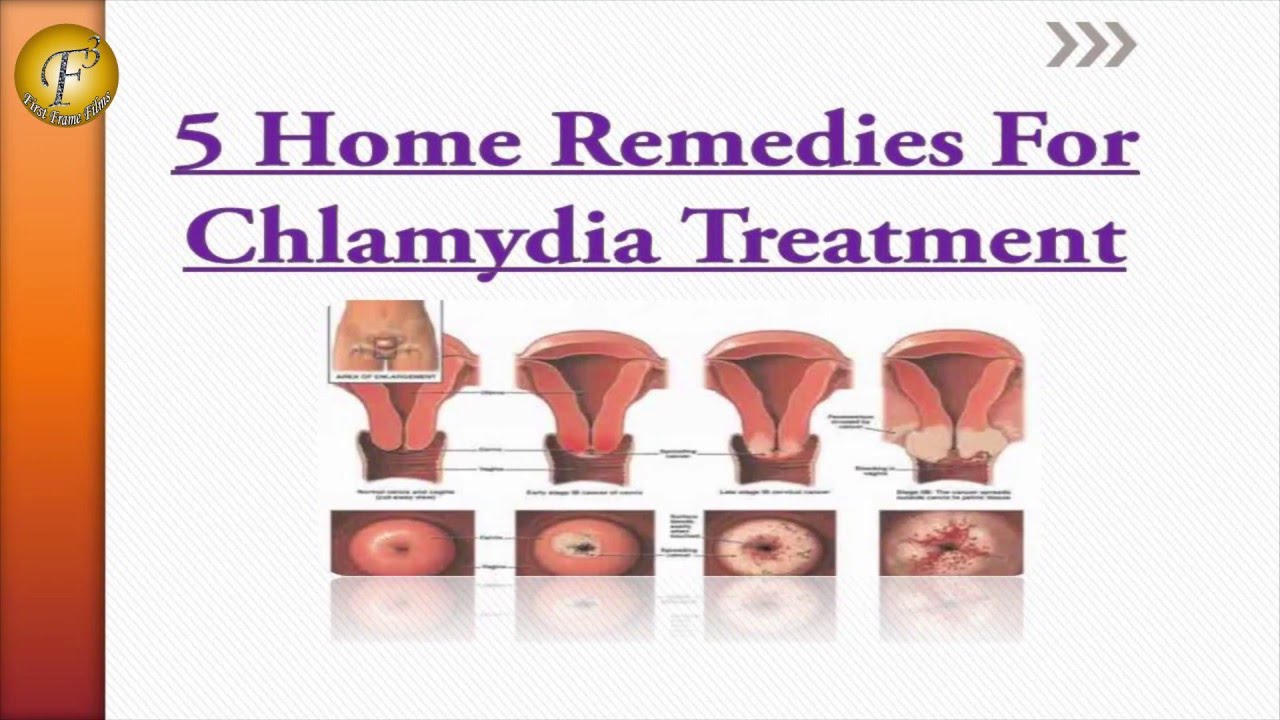Chlamydial Infection Among Neonates
Prenatal screening and treatment of pregnant women is the best method for preventing chlamydial infection among neonates. C. trachomatis infection of neonates results from perinatal exposure to the mothers infected cervix. Initial C. trachomatis neonatal infection involves the mucous membranes of the eye, oropharynx, urogenital tract, and rectum, although infection might be asymptomatic in these locations. Instead, C. trachomatis infection among neonates is most frequently recognized by conjunctivitis that develops 512 days after birth. C. trachomatis also can cause a subacute, afebrile pneumonia with onset at ages 13 months. Although C. trachomatis has been the most frequent identifiable infectious cause of ophthalmia neonatorum, neonatal chlamydial infections, including ophthalmia and pneumonia, have occurred less frequently since institution of widespread prenatal screening and treatment of pregnant women. Neonates born to mothers at high risk for chlamydial infection, with untreated chlamydia, or with no or unconfirmed prenatal care, are at high risk for infection. However, presumptive treatment of the neonate is not indicated because the efficacy of such treatment is unknown. Infants should be monitored to ensure prompt and age-appropriate treatment if symptoms develop. Processes should be in place to ensure communication between physicians and others caring for the mother and the newborn to ensure thorough monitoring of the newborn after birth.
How Do People Get Chlamydia
Chlamydia can spread when you have unprotected sexual contact with someone who already has the infection. This means vaginal, oral or anal sex without using a condom.
Transmission occurs because the bacteria that cause chlamydia live and grow in the fluids that are secreted during sexual activity. If you have chlamydia, there is a 30% to 50% chance of your partner catching it every time you have unprotected sex.
Since chlamydia often has no symptoms, you probably wont know whether your partner has it.
Chlamydia cant spread from toilets, swimming pools or usual contact with people. It only spreads through the sharing of genital fluids.
Newborn babies, however, can get chlamydia through their mother during childbirth.
Chlamydia infections can live in the nose, genitals or rectum for more than 2 years.
Chlamydia And Female Fertility
If left untreated, chlamydia can spread and infect other parts of the female reproductive system, in particular the uterus and fallopian tubes, which can result in pelvic inflammatory disease . With one in five women with chlamydia developing PID, chlamydia is the most common cause of infertility in women.
PID sometimes develops without causing symptoms and just like chlamydia, it is often diagnosed too late. Over time, the disease causes blocking or scarring to the fallopian tubes, which leads to infertility as well as miscarriage, premature birth and stillbirth.
In other cases, PID can lead to an ectopic pregnancy, which represents a serious health risk for the mother.
Recommended Reading: How Much Is The Pill For Chlamydia
What Is The Best Medication For Chlamydia
Finding the best medication for chlamydia isnt too much of a struggle as antibiotics tend to be pretty effective. However, different patients will have different needs, allergies, and factors that determine their best medication. The correct antibiotic to treat your chlamydia may vary from the one that works for another patient. Consult a healthcare professional when selecting a medication for your chlamydia, especially if pregnancy is suspected.
| Best medications for chlamydia | ||
|---|---|---|
| 500 mg taken every 12 hours | Stops the growth of bacteria | Nausea, headache, dizziness |
Dosage is determined by your doctor based on your medical condition, response to treatment, age, and weight. Other possible side effects exist. This is not a complete list.
How Do You Get Chlamydia

Chlamydia is usually passed on through unprotected vaginal, anal or oral sex.
Chlamydia can be passed on through genital contact. This means you can get chlamydia from someone who has the infection if your genitals touch, even if you dont have sex or ejaculate .
You can also get chlamydia if you come into contact with infected semen or vaginal fluid, or get them in your eye.
Chlamydia cant be passed on through kissing, hugging, sharing towels or using the same toilet as someone with the infection.
Recommended Reading: Is Itching A Symptom Of Chlamydia
What Are The Treatments For Chlamydia
If you are diagnosed with chlamydia, your doctor will prescribe oral antibiotics. A single dose of azithromycin or taking doxycycline twice daily for 7 to 14 days are the most common treatments and are the same for those with or without HIV.
With treatment, the infection should clear up in about a week. Do not have sex for at least 7 days until you have taken all of your medication, and do not stop taking the antibiotics even if you feel better.
Your doctor will also recommend that your partner be treated as well to prevent reinfection and further spread of the disease.
Women with serious infections, such as pelvic inflammatory disease, may require a longer course of antibiotics or hospitalization for intravenous antibiotics. Some severe pelvic infections may require surgery in addition to antibiotic therapy.
Make sure you get retested after three months to be certain the infection is gone. Do this even if your partner has been treated and appears to be infection free.
You Cant Catch Chlamydia From A Toilet Seat
Many people believe they can get chlamydia from a toilet seat. This isnt true.
Theres no need to worry about catching chlamydia in a public bathroom. Even if you share a toilet seat with someone who has it, you cant get the infection. You also cant catch chlamydia from sharing items like towels.
Usually, chlamydia spreads through unprotected sex. Its also possible to get the disease if you share sex toys with someone who has the infection. Sex toys should be washed or covered with a condom. If your partner has vaginal fluid or semen on their fingers, it may be possible to spread the infection that way.
Recommended Reading: Can I Test Positive For Chlamydia And My Partner Negative
Get Retested Following Treatment
Many people have more than one chlamydia infection. If youre a girl or woman and your sex partners are not treated for the infection, you will be at high risk for reinfection. Repeated infections with chlamydia make it much more likely that your ability to have children will be affected. Repeated infections also raise your risk of painful complications, such as pelvic inflammatory disease.
Both women and men with chlamydia should be retested about three months after they are first diagnosed and treated. Go to be retested even if you think your sex partners were successfully treated.
Im Pregnant How Does Chlamydia Affect My Baby
If you are pregnant and have chlamydia, you can pass the infection to your baby during delivery. This could cause an eye infection or pneumonia in your newborn. Having chlamydia may also make it more likely to deliver your baby too early.
If you are pregnant, you should get tested for chlamydia at your first prenatal visit. Testing and treatment are the best ways to prevent health problems.
Dont Miss: How To Know If You Have Chlamydia Male
Don’t Miss: Can Uti Antibiotics Get Rid Of Chlamydia
The Costs Of Infertility
Treating chlamydia is easy, but for those who do not get treated or get treated too late, living with the damage caused by the infection can be hard.
Rabin has treated many women who never knew they had had chlamydia until they couldnt get pregnant due to blocked fallopian tubes. These women often wind up trying in vitro fertilization , which does not always succeed.
There are all kinds of costs involved for these women, say Rabin. There are emotional costs and physical costs. There are also financial costs with IVF. Its much better to not let the tubes get damaged, she says, and get pregnant the old-fashioned way.
Summary Of The Evidence
There is no evidence relating to patient values and preferences but the Guideline Development Group agreed that there is probably no variability in the values people place on the outcomes. Research related to other conditions indicates that adherence may be improved with simpler medication regimens. The GDG therefore agreed that azithromycin may be more acceptable to patients since it is a single dose regimen . There is little to no evidence for equity issues and feasibility. Resistance in other infections that often co-occur with chlamydia may restrict the use of some medicines, such as ofloxacin. For many of these medicines, costs may differ between countries in places with high incidence of chlamydia, the cost differences between azithromycin and doxycycline may be large due to greater numbers of people requiring treatment.
In summary, there was moderate quality evidence for trivial differences in benefits and harms between azithromycin and doxycycline, and although the cost of azithromycin is higher, the single dose may make it more convenient to use than doxycycline. While the differences are also trivial with the other medicines, the evidence is low quality and these are therefore provided as alternatives, with the exception of delayed-release doxycycline, which is currently expensive.
See for list of references of reviewed evidence, and for details of the evidence reviewed, including evidence profiles and evidence-to-decision frameworks .
Read Also: Can Chlamydia Get In Your Throat
How Common Is Chlamydia
Chlamydia is the most common STI caused by bacteria. Nearly 2 million cases of chlamydia were reported to the CDC in 2019. The number of infections is likely even higher. When compared to previous years, 2019 infection rates increased among people of all genders, all races and ethnicities, and in every region of the U.S. Most cases of chlamydia are asymptomatic, which means there are no signs or symptoms of an infection. Many of these cases likely go unreported.
Certain demographic characteristics may make you more likely to get diagnosed with chlamydia. Youre more likely to get diagnosed if youre:
- A teen or young adult aged 15 to 24. More than half of all diagnosed chlamydia cases in the U.S. occur in this age group.
- A cisgender woman aged 15 to 24. Young women in this age group are targeted for chlamydia screenings, and the rate of infection among those who are tested is high.
- A man who has sex with men . Chlamydia infections disproportionately affect men who have sex with men.
- Black and non-Hispanic. Chlamydia infections disproportionately affect non-Hispanic Black populations.
How Will I Know If I Have Chlamydia

You can only be certain you have chlamydia if you have a test.
Anyone can get chlamydia. Youre more likely to have it if youre under 25, have a new sexual partner, or more than one sexual partner in the last year, and if you havent used condoms.
You should have a test if:
- you, or a partner, have or think you might have symptoms
- youve recently had sex without a condom with a new partner
- you, or a partner, have had sex without a condom with other partners
- during a vaginal examination, your doctor or nurse says that the cervix is inflamed and/or theres an unusual discharge
- a sexual partner tells you they have a sexually transmitted infection
- you have another STI.
If you live in England, and youre a woman who is under 25 and sexually active, its recommended that you have a chlamydia test when you change sexual partner and once a year.
If youre a man who is under 25 and sexually active, its recommended that you have a chlamydia test once a year if you are not using condoms with new or casual partners.
You could still have chlamydia even if a partner has tested negative. The only way to make sure you dont have chlamydia is to get tested yourself.
If you have chlamydia, youll be encouraged to be tested for other STIs as you can have more than one STI at the same time.
Read Also: What Does Chlamydia Feel Like For A Man
Can You Prevent Chlamydia
You can lower your risk of getting chlamydia and other STIs by:
- using a condom every time you have vaginal, oral or anal sex
- not having sex with someone with chlamydia, even with a condom, until theyve finished treatment and 1 week has passed since their last dose of antibiotics
- regularly getting tested for STIs, especially if you are under 30 and sexually active
Remember that most people with chlamydia dont show any symptoms and dont know they have it, so feeling ‘well’ does not mean that you or your partner are not infected. If in doubt, get tested.
If you have chlamydia, you can help reduce the spread by letting your recent sexual partners know so they can get tested and treated.
How Does Someone Get Chlamydia
Chlamydia is passed through oral, anal, or vaginal sex. Chlamydia can be passed from one person to another even if the penis or tongue does not go all the way into the vagina or anus.Eye infections can occur when discharge caries the disease into the eye during sex or hand-to-eye contact.
Chlamydia can also be passed from mother to newborn as the baby passes through the infected birth canal. This can result in eye infections, pneumonia or other complications.
You May Like: How Do I Get Tested For Chlamydia
Why Should I Have Treatment If I Have No Symptoms
If you are infected with chlamydia, it is essential that you take treatment even if you do not have any symptoms of chlamydial infection. Reasons for this include:
- The infection may spread and cause serious complications . This can be months or years after you are first infected.
- You can still pass on the infection to your sexual partner even if you do not have symptoms.
How Long Does Treatment Take
Treatment time for chlamydia can vary from one to seven days. Azithromycin requires only one dose for one day, while you must take other antibiotics multiple times a day for seven days.
To cure a chlamydia infection, take the antibiotics exactly as prescribed by your doctor and for the full length of the prescription, being sure to take every dose. There should be no medication left at the end of the treatment period. You cannot save medication in case you acquire chlamydia again.
Contact your doctor if you still have symptoms but have taken all your antibiotics. You will need a follow-up test with your doctor
You May Like: How Do They Test For Chlamydia
Home Remedies For Chlamydia
Chlamydia is caused by a bacterial infection. The only true cure for this type of infection is antibiotics.
But some alternative treatments may help ease symptoms. Its important to remember that untreated chlamydia can lead to long-term complications, including fertility problems and chronic inflammation.
Home remedies for chlamydia that may be effective include:
- Goldenseal.This medicinal plant may limit symptoms during an infection by reducing inflammation.
- Echinacea. This plant has been widely used to boost the immune system in order to help people overcome infections of many types, from the common cold to skin wounds. It may help reduce symptoms of chlamydia.
Although compounds in these plants might help to ease inflammation and infection in general, there arent any quality studies that show theyre effective specifically for chlamydia symptoms.
Parents Have A Role In Chlamydia Prevention
Parents can do two main things to help their kids avoid getting chlamydia and other sexually transmitted infections , says Dombrowski. These two things are:
Read Also: Difference Between Gonorrhea And Chlamydia Symptoms
How Many Days Does It Take To Recover From Chlamydia
It can take up to two weeks to recover from a chlamydia infection. Most prescriptions last 7 to 14 days on average and chlamydia is typically cleared up at the end. However, you will likely have to be retested after 3 months to ensure you have recovered fully. If you have severe chlamydia it may take longer to recover and a hospital stay may be involved.
Infant Pneumonia Caused By C Trachomatis

Chlamydial pneumonia among infants typically occurs at age 13 months and is a subacute pneumonia. Characteristic signs of chlamydial pneumonia among infants include a repetitive staccato cough with tachypnea and hyperinflation and bilateral diffuse infiltrates on a chest radiograph. In addition, peripheral eosinophilia occurs frequently. Because clinical presentations differ, all infants aged 13 months suspected of having pneumonia, especially those whose mothers have a history of, are at risk for , or suspected of having a chlamydial infection should be tested for C. trachomatis and treated if infected.
Diagnostic Considerations
Specimens for chlamydial testing should be collected from the nasopharynx. Tissue culture is the definitive standard diagnostic test for chlamydial pneumonia. Nonculture tests can be used. DFA is the only nonculture FDA-cleared test for detecting C. trachomatis from nasopharyngeal specimens however, DFA of nasopharyngeal specimens has a lower sensitivity and specificity than culture. NAATs are not cleared by FDA for detecting chlamydia from nasopharyngeal specimens, and clinical laboratories should verify the procedure according to CLIA regulations . Tracheal aspirates and lung biopsy specimens, if collected, should be tested for C. trachomatis.
Treatment
Erythromycin base or ethylsuccinate 50 mg/kg body weight/day orally divided into 4 doses daily for 14 days
Azithromycin suspension 20 mg/kg body weight/day orally, 1 dose daily for 3 days
You May Like: How To Tell If A Man Has Chlamydia